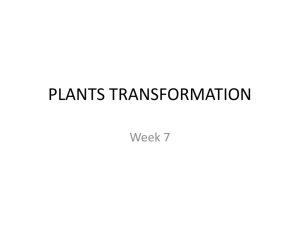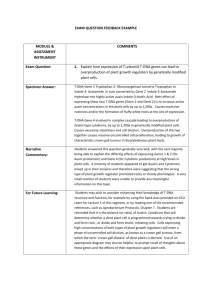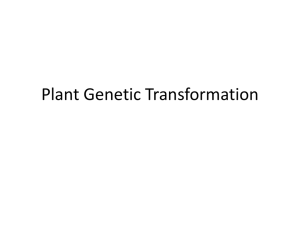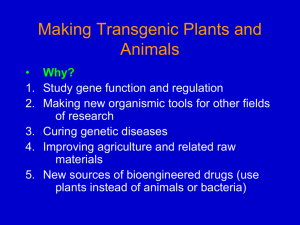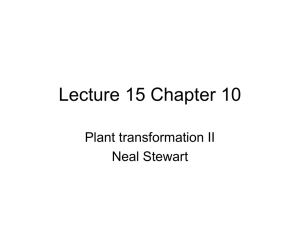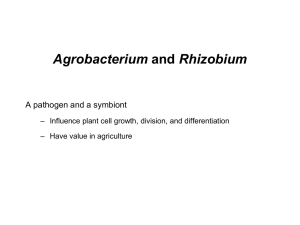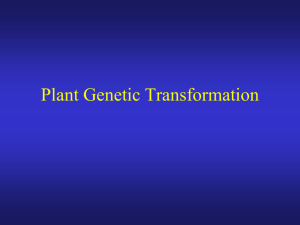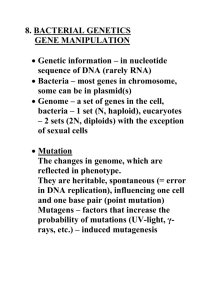expression in plants
advertisement
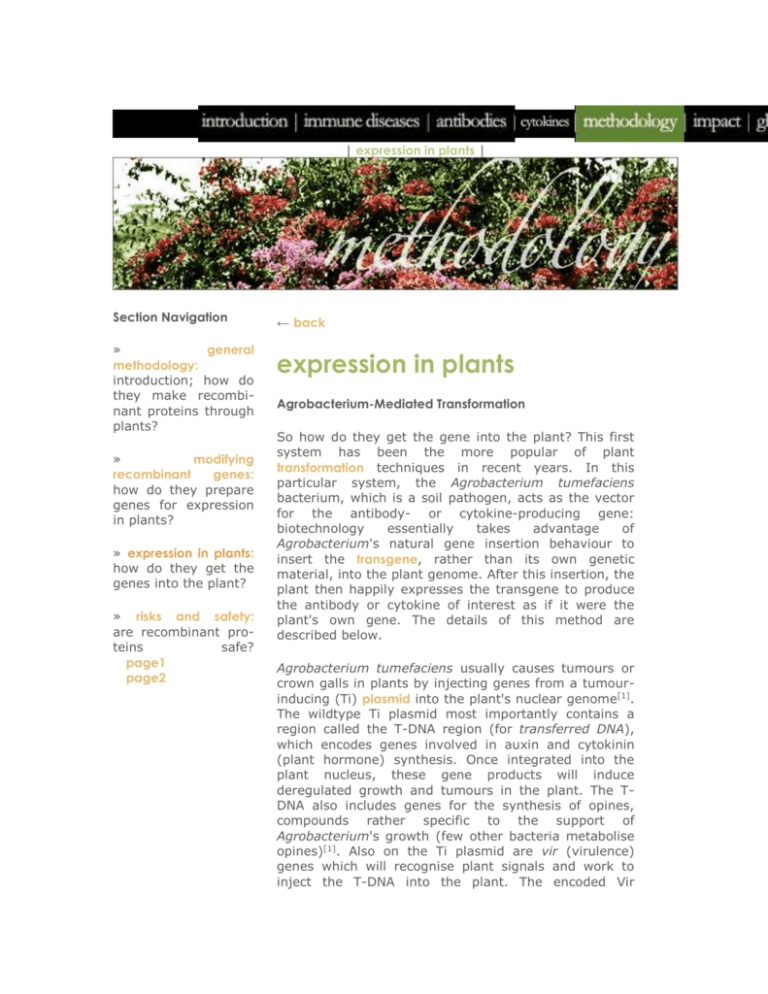
modifying recombinant genes | expression in plants | risks and safety Section Navigation ← back » general methodology: introduction; how do they make recombinant proteins through plants? expression in plants » modifying recombinant genes: how do they prepare genes for expression in plants? » expression in plants: how do they get the genes into the plant? » risks and safety: are recombinant proteins safe? page1 page2 Agrobacterium-Mediated Transformation So how do they get the gene into the plant? This first system has been the more popular of plant transformation techniques in recent years. In this particular system, the Agrobacterium tumefaciens bacterium, which is a soil pathogen, acts as the vector for the antibody- or cytokine-producing gene: biotechnology essentially takes advantage of Agrobacterium's natural gene insertion behaviour to insert the transgene, rather than its own genetic material, into the plant genome. After this insertion, the plant then happily expresses the transgene to produce the antibody or cytokine of interest as if it were the plant's own gene. The details of this method are described below. Agrobacterium tumefaciens usually causes tumours or crown galls in plants by injecting genes from a tumourinducing (Ti) plasmid into the plant's nuclear genome[1]. The wildtype Ti plasmid most importantly contains a region called the T-DNA region (for transferred DNA), which encodes genes involved in auxin and cytokinin (plant hormone) synthesis. Once integrated into the plant nucleus, these gene products will induce deregulated growth and tumours in the plant. The TDNA also includes genes for the synthesis of opines, compounds rather specific to the support of Agrobacterium's growth (few other bacteria metabolise opines)[1]. Also on the Ti plasmid are vir (virulence) genes which will recognise plant signals and work to inject the T-DNA into the plant. The encoded Vir proteins slice the bacterial DNA at the T-DNA border repeat sequences and physically relocate the T-DNA as a single-stranded T-DNA molecule (T-strand) to the plant's nucleus, where the T-strand integrates into the genome, probably by taking advantage of cellular DNA repair mechanisms[1,2]. In introducing a recombinant gene, the transgene will be substituted for Agrobacterium's usual T-DNA sequences (i.e. the auxin, cytokinin, and opine synthesis genes) so that no tumour forms. However, the border repeat sequences are preserved so that the Vir proteins can still recognise the T-DNA and move it. The vir genes themselves are also untouched, so that the mechanism of transfer is not disturbed. Often, a selectable marker is also inserted into the plasmid to allow detection of sucessful transformation events: transgenic plants can be easily recognized by their persistent grow in selective media (e.g. hygromycin)[1,3]. See the diagram below for a full schematic. This method is highly useful because Agrobacterium tumefaciens can infect virtually any plant, and it is fairly cheap. For example, tobacco, pea, rice, wheat and corn plant are favourite systems [4]. Unfortunately, only genomic integration is possible, so any episomal DNA inserts are out of the question. As well, transformation is only transient[3]. Gene Gun Transfer This method, also known as particle bombardment, seems to be slightly less popular, but is the only other one currently available to researchers. In this method, the created transgene cassette is placed in a vector (plasmid) and many copies of it are coated onto a microscopic gold-coated particle. This particle is accelerated into the plant cell nucleus, where the plasmids will deattach from the particle and hopefully integrate into the plant genome. Transformation by particle bombardment is by no means permanent either, and like Agrobacterium transformation, also prone to superfluous DNA (unnecessary, i.e. vector DNA or the selectable marker) transfer[3,5]. → next references 1) Tzfira T, Citovsky V. Agrobacterium-mediated genetic transformation of plants: biology and biotechnology. Curr Opin Biotechnol 2006, Feb 2; [Epub ahead of print]. 2) Gelvin, SB. Agrobacterium-mediated plant transformation: the biology behind the "gene-jockeying" tool. Microbiol Mol Biol Rev 2003, 67: 16-37. 3) Ma JK, Drake PM, Christou P. The production of recombinant pharmaceutical proteins in plants. Nat Rev Genet 2003, 4: 794-805. 4) Schillberg S, Twyman RM, Fischer R. Opportunities for recombinant antigen and antibody expression in transgenic plants--technology assessment. Vaccine 2004, 23: 1764-1769. 5) Department of Soil and Crop Sciences at Colorado State University, 1999-2004. How to make Transgenic Plants: Animation Demo. http://cls.casa.colostate.edu/TransgenicCrops/ animation.html , accessed Mar 20, 2006. all content alexander collins, su yuan, & weija chiang 2006 site design weija chiang 2006
